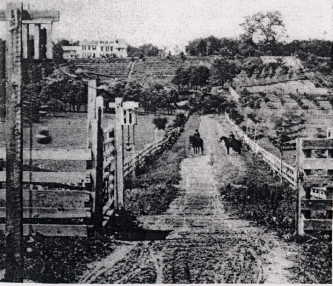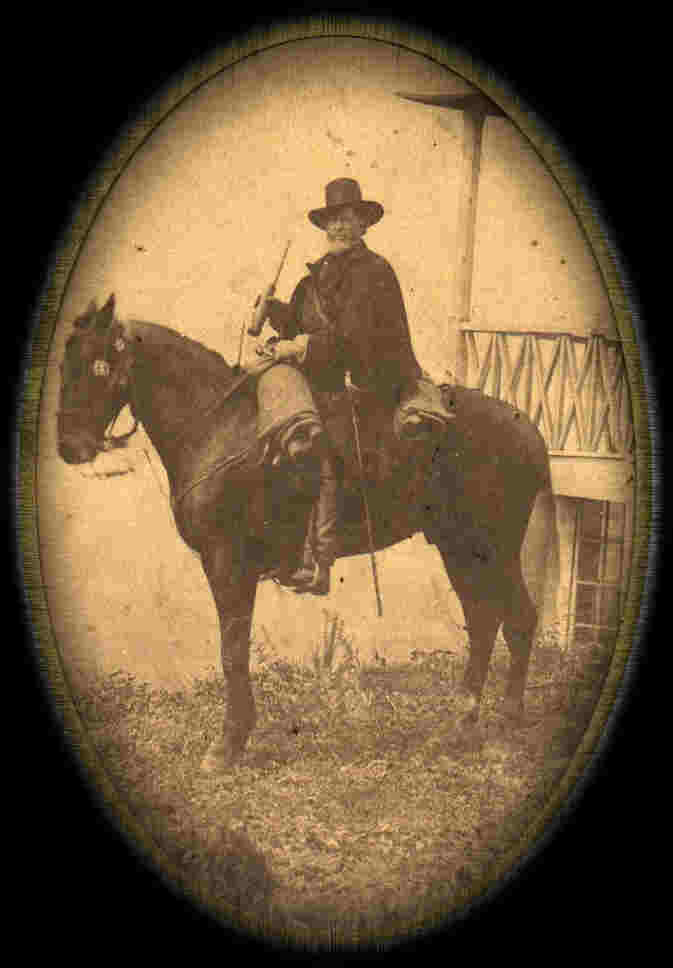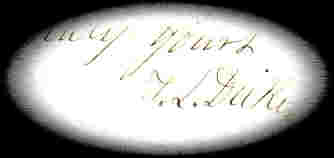
THEOPHILUS LYLE DICKEY
A Lawyer, Jurist, one time owner of the Schuyler Advocate, news paper, later re-named "The Test", was born Nov. 12, 1812, near Paris, Ky. He read law in his native state, moved to Ohio, liberated the slaves that he had inherited, and afterward established himself in practice in Illinois. During the Mexican war he served as a captain in Colonel Hardin's regiment, and in the civil war he was colonel of the Fourth Illinois cavalry,and served for two years under General Grant, on whose staff he served for some months as chief of cavalry. From 1868 till the close of President Johnson's administration he was Assistant Attorney-General of the United States From 1876 till his death he was Judge of the Illinois Supreme Court He died July 22, 1885, in Atlantic City, N. J.
HISTORY OF EARLY CHICAGO MODERN CHICAGO AND ITS SETTLEMENT EARLY CHICAGO, AND THE NORTHWEST BY ALBERT D. HAGER page 595
On July 5, 1875, a celebration was held on the bank of the Calumet, near where One Hundred and Ninth Street would abut on the west bank of the river. The occasion was the laying of the corner-stone of the Joseph H. Brown Iron & Steel Company's rolling mill, and the fact of the Calumet River being opened for navigation twelve miles from its mouth. One batch of the celebrants came on excursion train to Riverdale and were welcomed by Charles H. Dolton, at Dolton Junction; where interminable tables of refreshments were prepared for guests. His congratulations were replied to by Judge T.Lyle Dickey and General U. F. Linder. The guests then formed in line with a band at their head and embarked on board the fleet, commanded by Commodore James H. Bowen, consisting of steamer Florence; steamer Ben Drake; schooner Mary Ellen Cook, towed by Belle Chase; schooner Lavinda, towed by G. W. Evans; the steam pleasure yacht, the Idler, and the tugs the Rover and Alert. Still another mass of excursionists came via the R. I. R. R. and the branch Belt Railroad to South Chicago, and thence by branch to Irondale. Upon the junction of the two bodies of excursionists there were found to be present the following gentlemen, among many others: Judge. Lyle T Dickey, U. F. Linder, Paul Cornell, George W. Gage, County Commissioners Burdick, Clough, Crawford and Jones; J. L. Jameson, M. B. Boyden, Charles E. Rees, George S. Essex, R. J. Oglesby, E. M. Haines, John McArthur, John H. Hoxie, W. P. Gray, Leslie Lewis, W. H. Waters, George W. Binford, C. B. Waite, T. H. Bryant, W. R. Cornell, E. C. Cole, J. Hammond, J. R. Bensley, William Bye, Frank Agnew, E. C. Brooks, H. R. Shaffer, Joseph H. Brown, Samuel Hale, W. Bonnell, James H. Rees, C. H. Cutler, William Moore, F. A. Bragg, C. H. Dolton, B. F. Guyton, Joseph T. Torrenee, C. B. Hale, G. W. Hale, James P. Root, Henry Wisner, I. W. Gregg, Charles Follansbe, J. A. Ellison, E. S. Wadsworth, N. Sherwood, A.D. Waldron, A. C. Calkins, O. S. Hough, Edward Ely, E. H. Blakely, M. A. Farwell, Jerome Beecher, Charles Cleaver, A. N. Lancaster, George W. Waite, Ira P. Bowen, W. S. Hinckley, C. Henrotin, George H, Waite, James Wadsworth, W. K. Nixon, Fernando Jones, J. Harrison Ely, George B. Armstrong, Thomas L. Morgan, Charles S. Waite, William Bowers and Dr. Trowbridge. W. K. Burdick stated the object of the meeting, and a speech was then made by U. F. Linder, the friend of Abraham Lincoln. J. D. Webster was nominated, and elected, as president of the day, and after prayer by Rev. C. E. Felten and a speech by Irus Coy, the corner-stone was laid. This was made of Lake Superior sand-stone, and was about six feet high by four and a half feet square, surmounted by an ornamented cap. Upon the side was carved a bee-hive, with a cornucopia on each side, and underneath:
Wallace-Dickey Family Cemetery: About fifty yards southwest of the Wallace home in Illinois is the Wallace-Dickey family cemetery where General Wallace, his wife and daughter, and members of the T. Lyle Dickey family are buried. It has been said that Wallace's war horse is also buried there.
W. H. L. Wallace Home: of General Wallace is located on LaSalle Street atop Ottawa's north bluff. Now an apartment house, it is not open to the public but can be seen from the road.

The Dickey Home






